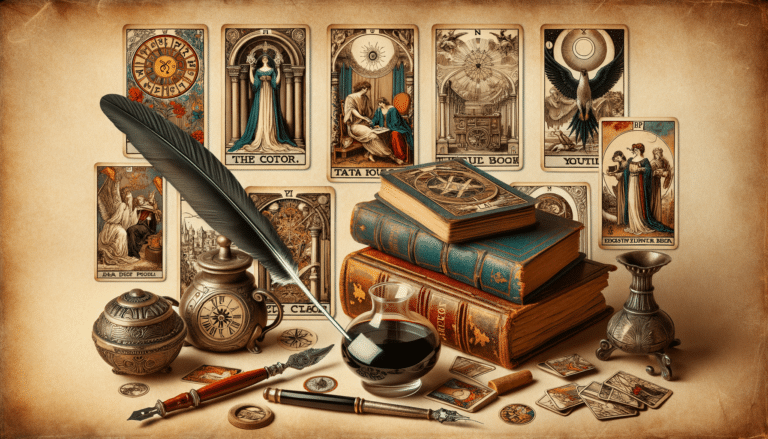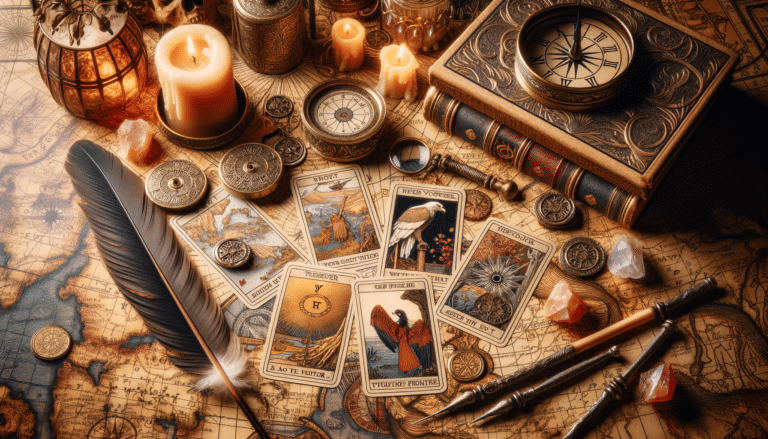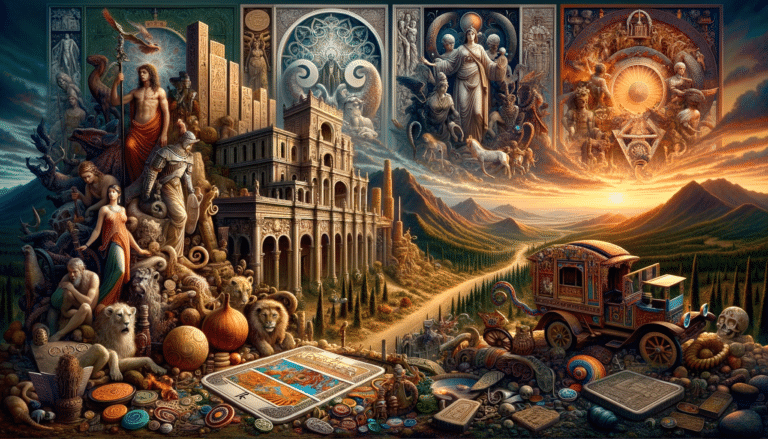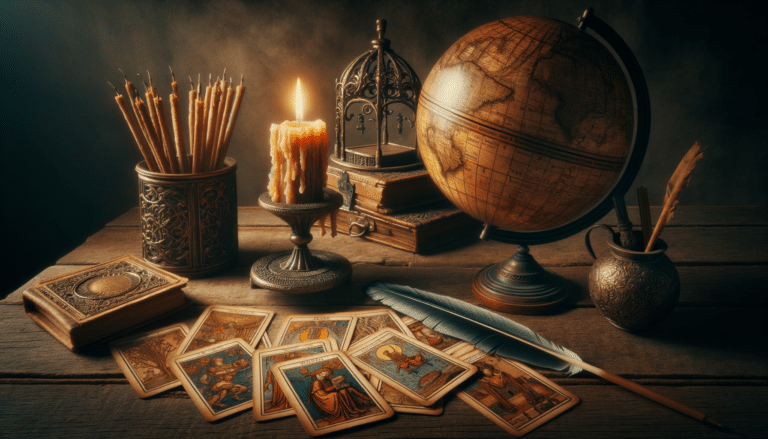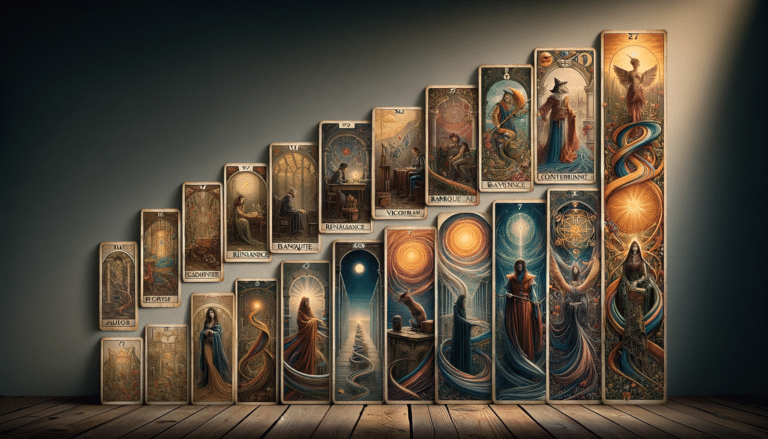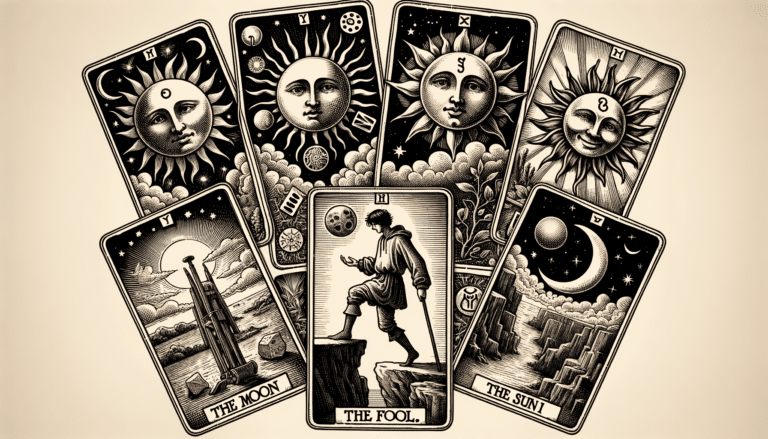Impact of Tarot on Fortune Telling History: Three Crucial Insights
You might think tarot cards are just a modern fad, but they’ve actually shaped the history of fortune-telling in profound ways.
Originating in the 15th century, tarot cards began as playing games before evolving into a tool for divination. The rich symbolism in tarot imagery has offered a nuanced language for practitioners to explore the subconscious and interpret potential futures.
As tarot’s influence on divination grew, it became intertwined with Renaissance magic, reflecting the era’s quest for knowledge and the unseen. Over time, the evolution of tarot card interpretation has mirrored societal changes, embedding the cards deeply into occult traditions.
Today, the popularization of tarot readings continues to affirm its significant role in modern culture, making it more than just a method of fortune-telling, but a bridge to our collective past.
So let’s explore the impact of tarot on fortune telling history…
Key Takeaways
- Tarot cards expanded upon standard playing cards with the introduction of the Major Arcana, leading to the potential for divination.
- Tarot has had a significant influence on the development and standardization of fortune-telling practices, including the introduction of card archetypes and the emphasis on reading ethics.
- Tarot has been integrated into rituals and magical practices for spiritual development, as well as for meditation and transforming inner and outer worlds.
- The symbolism within tarot cards has evolved over time, influenced by politics, religion, culture, and artistic interpretations, allowing for diverse and contemporary readings.
Origins of Tarot Cards
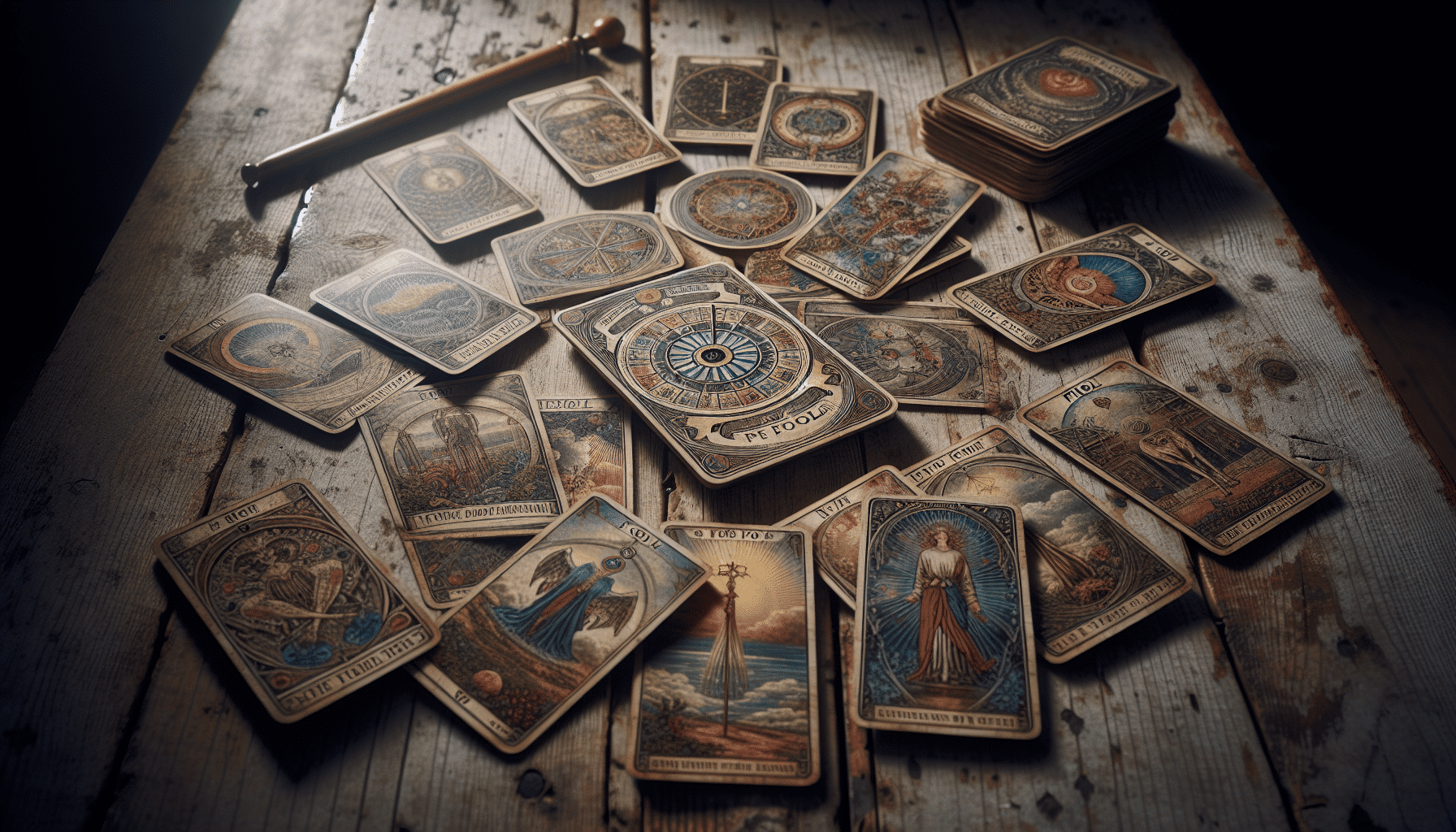
In the mid-15th century, you’ll find the earliest known tarot cards emerging in Europe, marking a significant evolution in the practice of fortune-telling. These cards weren’t initially created for mysticism, but rather for play. Their card origins are steeped in the tradition of playing cards, which had already been well-established across Europe for centuries.
As you delve deeper, you’ll discover that the tarot deck expanded upon the standard four suits found in ordinary playing cards. It included additional cards with allegorical illustrations, known as the Major Arcana. These unique cards introduced symbolic imagery and archetypes that would become the backbone of tarot’s divinatory usage.
Interestingly, while you might associate tarot strictly with esotericism today, these cards were once part of mainstream card games, just like poker or bridge. It wasn’t until centuries later that tarot’s potential for introspection and prophecy was fully embraced.
Symbolism in Tarot Imagery
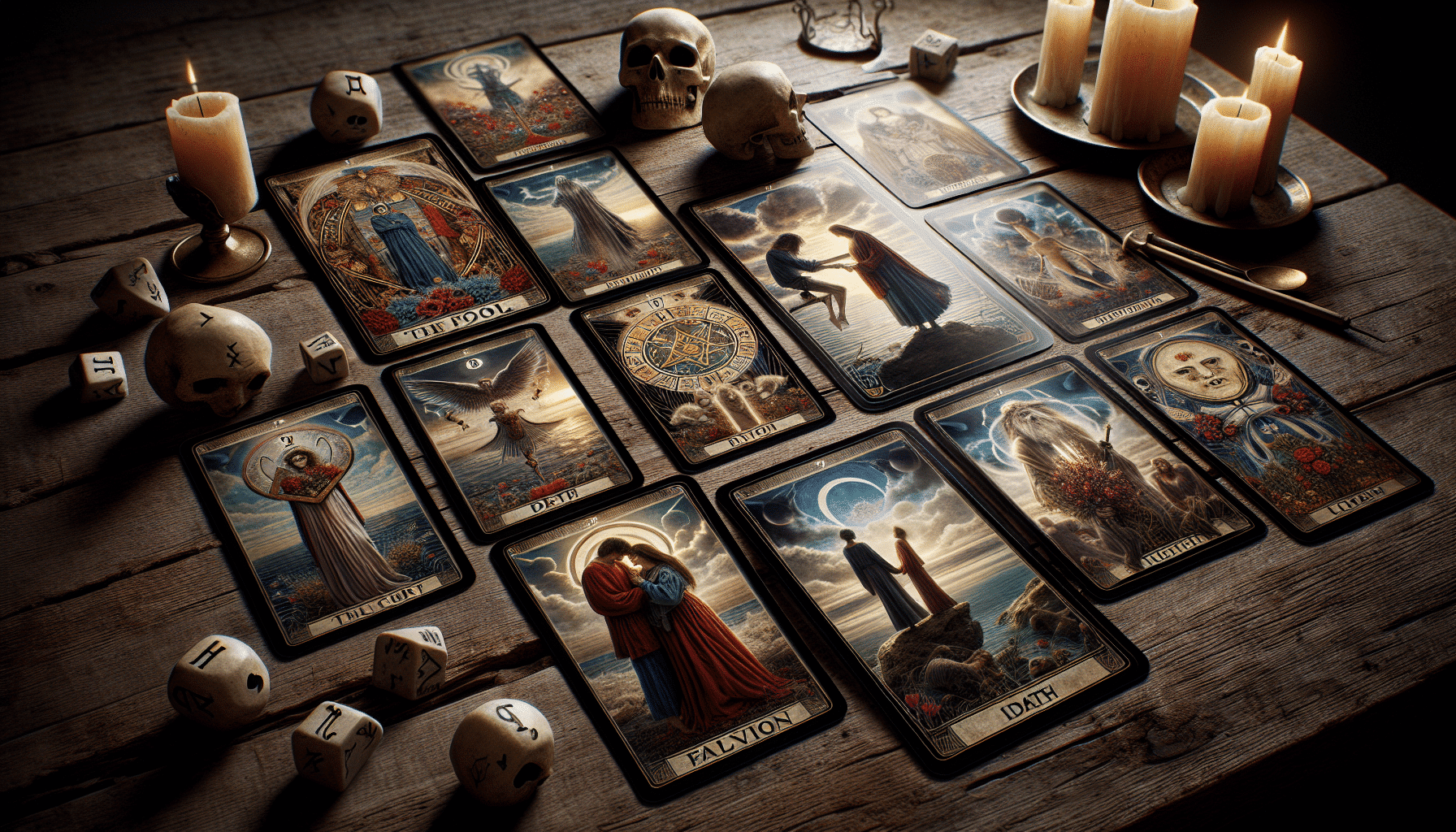
Delving into tarot symbolism, you’ll notice each card is imbued with imagery that holds deep esoteric meanings, shaping the way tarot has influenced fortune-telling through the ages. The cards are a tapestry of arcane allegories, each element woven with purpose and insight. As you explore the rich tapestry of the tarot, the pictorial metaphors speak volumes about human experiences and spiritual journeys.
The Major Arcana, for instance, features archetypal figures and scenarios that map the human condition and our existential pathways. The Fool’s leap of faith or the Wheel of Fortune’s cyclical fate – these aren’t just illustrations; they’re visual narratives that encapsulate life’s complexities. Meanwhile, the Minor Arcana delves into day-to-day aspects, with each suit representing a facet of human life: emotions (Cups), intellect (Swords), material wealth (Pentacles), and creativity or action (Wands).
Each card’s symbols, colors, numbers, and iconography are keys to unlocking layers of interpretation. A heart pierced by swords isn’t merely a dramatic image; it’s a direct expression of heartache or betrayal. Grasping these symbols allows you to connect the dots across the cards, weaving stories that resonate with individuals’ past, illuminate their present, and project potential futures.
Check out our Tarot Decks here…
Tarot’s Influence on Divination
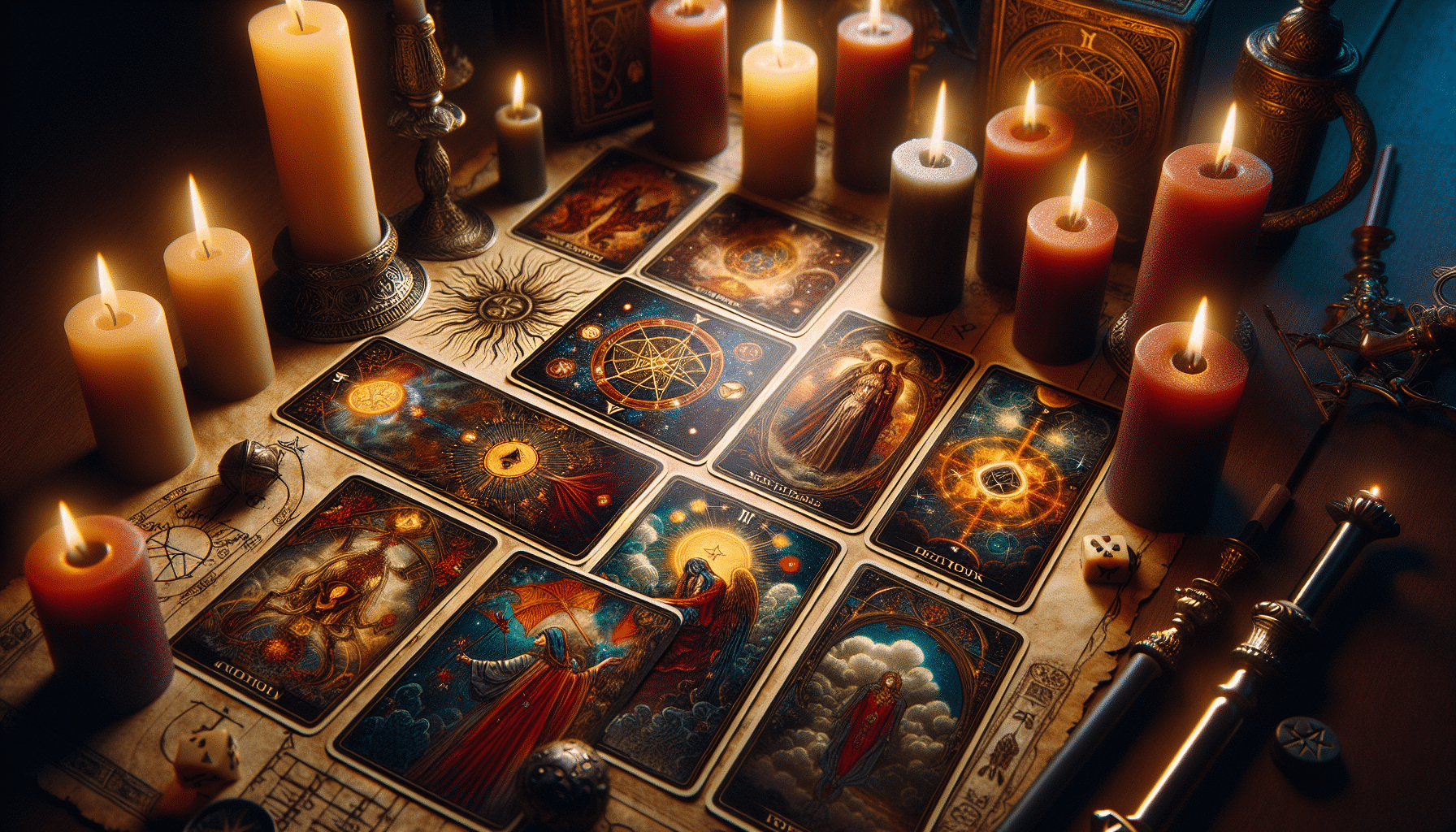
Reflecting on tarot’s profound legacy, you’ll find its most significant impact lies in the realm of divination, shaping how fortunes are told and futures are pondered. The tarot deck, rich with card archetypes, offers a structured way to interpret complex human experiences and emotions. These archetypes serve as a universal language that has shaped the practice of fortune-telling across cultures.
Here’s a visual breakdown of tarot’s influence on divination:
-
Introduction of Card Archetypes: Tarot decks introduced a range of symbolic figures and scenarios that encapsulate various life situations, influencing the way divination is approached and understood.
-
Standardization of Reading Practices: Tarot contributed to the development of standardized spreads and readings, making the practice more accessible and systematized for both readers and clients.
-
Incorporation into Rituals: Tarot cards became integral to certain spiritual and magical rituals, reinforcing the idea that divination isn’t just predictive but also a transformative journey.
-
Emphasis on Reading Ethics: The tarot community has fostered a strong sense of ethics, emphasizing the importance of responsibility and consent in readings, which has influenced the broader field of divination.
Learn more with these best tarot books here…
Tarot and Renaissance Magic
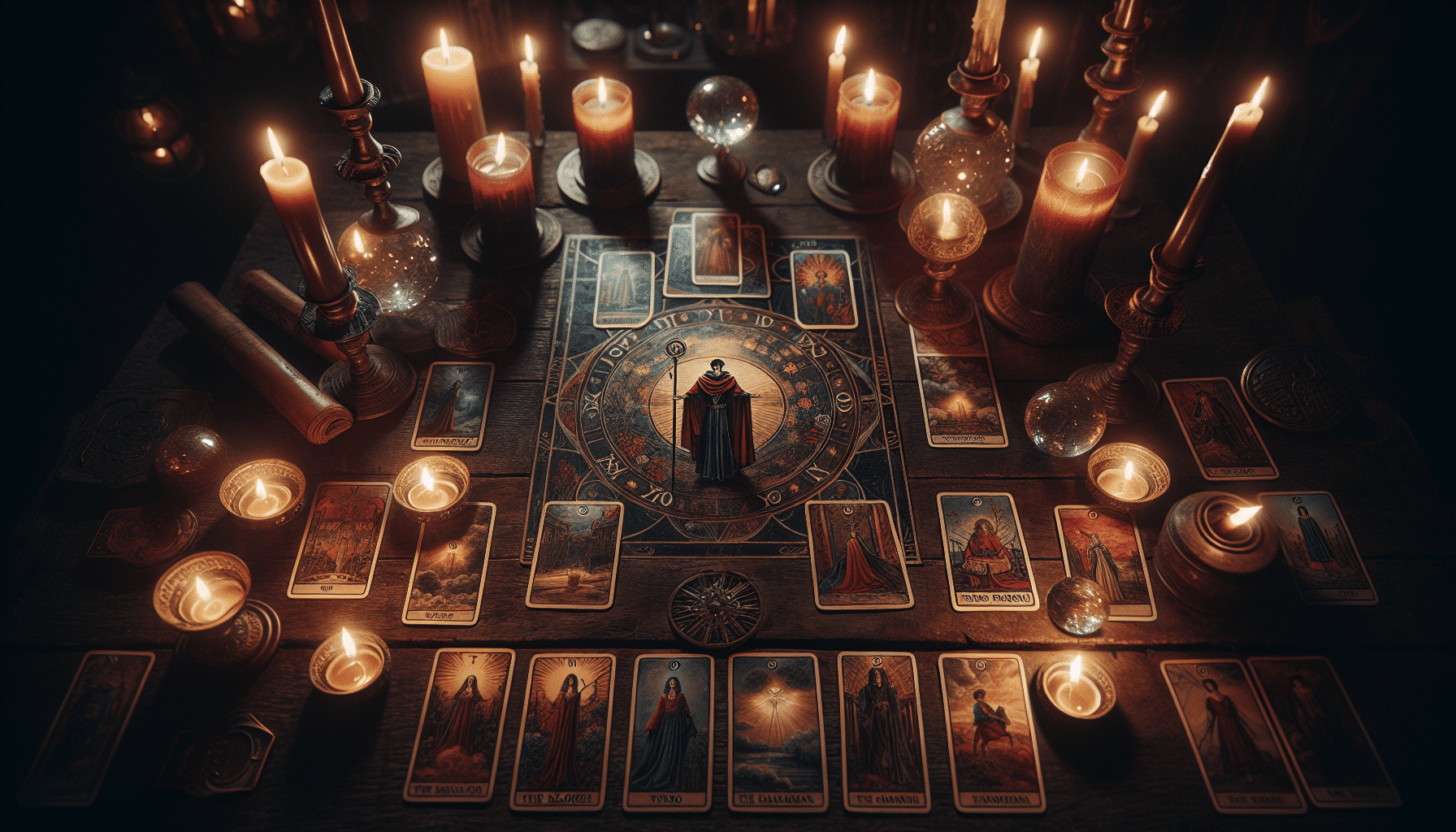
Building on the archetypes and ethics of tarot in divination, you’ll discover its deep entwinement with Renaissance magic, where the cards weren’t only tools for prediction but also for invoking philosophical and mystical insights.
The Renaissance worldview was rich with symbolism and the belief that the universe was a coherent whole, interconnected through signs and analogies. Tarot cards, with their intricate imagery, fit seamlessly into this cosmos, offering a microcosm of the broader macrocosm.
Occult philosophers of the time saw tarot as a key to unlocking the secrets of existence. They integrated the cards into their magical practices, believing that tarot could reveal the hidden correspondences between the earthly and the divine. This wasn’t mere fortune-telling; it was an intellectual pursuit, a quest for wisdom. You’d find these thinkers using tarot for meditation, spiritual development, and as a guide for transforming their inner and outer worlds.
Learn even more secrets of history of tarot here…
Evolution of Tarot Interpretations
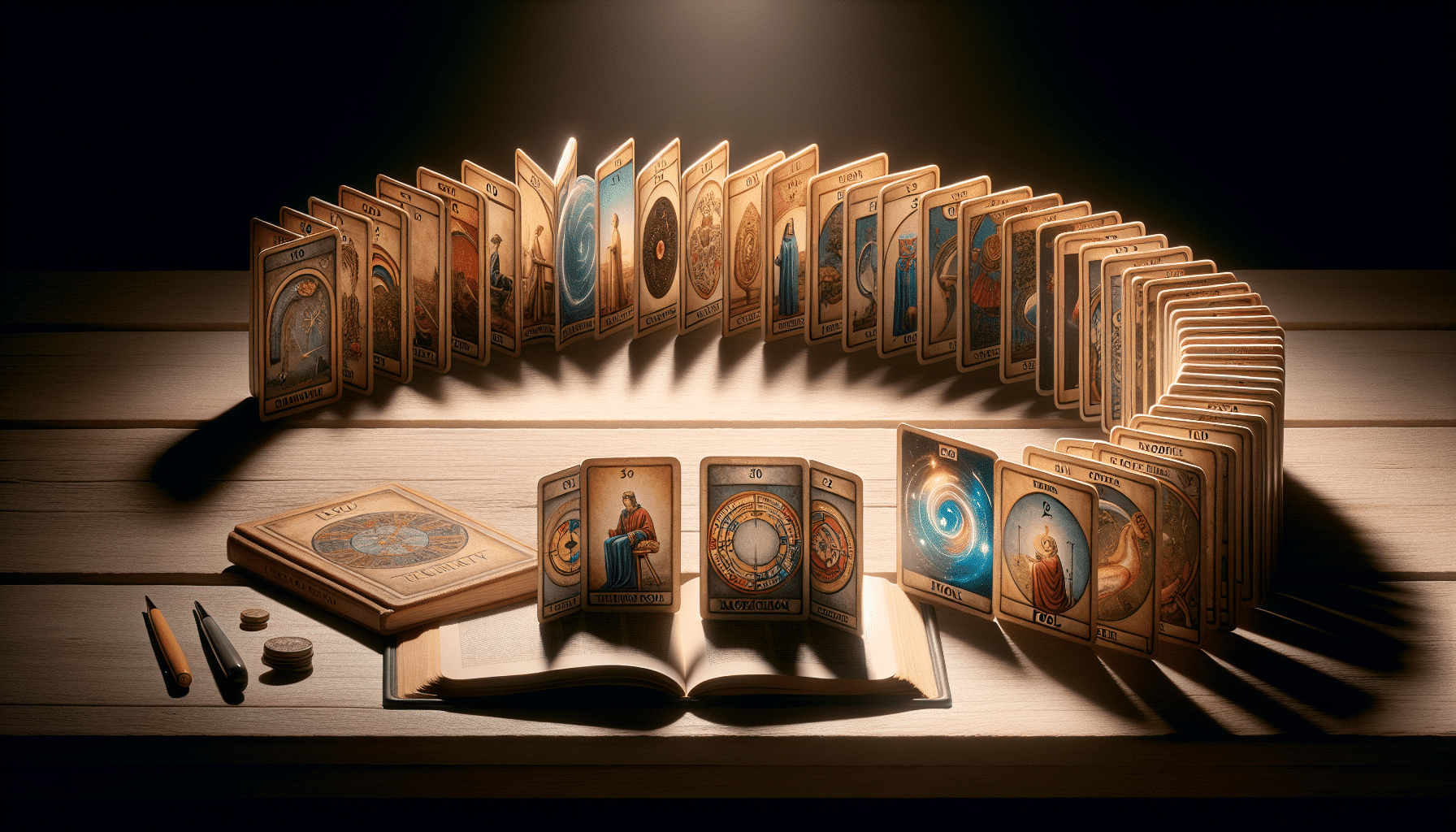
As you explore the history of tarot, you’ll notice that the symbolism within the cards hasn’t been static; it’s shifted significantly as different cultures adopted and adapted the practice. This influence is evident in the way tarot interpretations have been colored by the societal and historical contexts of the times.
Additionally, the methods used to interpret the cards have diversified, reflecting a rich tapestry of perspectives and approaches to understanding the messages behind the imagery.
Symbolism Shifts Over Time
You’ll find that the rich tapestry of symbols on tarot cards has evolved significantly, altering the way interpretations are made. This evolution is a result of symbolic convergence, where cultural and societal shifts influence card meanings. Understanding this fluid symbolism is crucial for accurate readings.
Here’s a breakdown of this symbolic shift:
-
Historical Influences: Changes in politics, religion, and culture reflect in evolving card symbolism.
-
Esoteric Associations: As mystical and occult studies change, so do the tarot’s symbolic references.
-
Artistic Interpretations: Different artists infuse their decks with unique symbolism, affecting interpretive variety.
-
Psychological Perspectives: Modern interpretations often incorporate psychological concepts, aligning readings with contemporary mental and emotional understanding.
These factors ensure that tarot remains a dynamic tool for self-reflection and forecasting.
Cultural Influence
Tarot’s symbolism hasn’t only been shaped by history but also deeply woven into the cultural fabric, mirroring the ever-changing values and beliefs of societies. As you delve into the world of tarot, you’ll notice how each card reflects a tapestry of narratives that societies hold dear. But tread carefully; cultural appropriation can occur when these symbols are used without understanding their origins or significance.
Tarot decks have evolved, offering a rich source of artistic inspiration. Modern interpretations and visuals can differ vastly from traditional decks, reflecting contemporary issues and diversity. You’ll see how adaptations of the tarot resonate with today’s challenges, making ancient wisdom relevant to your modern life. This evolution showcases the tarot’s unique ability to bridge the old with the new, while honoring its cultural legacy.
Interpretative Methods Diversify
The evolution of tarot has seen interpretative methods diversify, allowing you to connect more personally with the cards’ messages. As you delve into the world of tarot, you’ll find that card psychology and various reading techniques can significantly influence your experience. These methods can range from intuitive interpretations to structured spreads that dictate the meaning of each card.
Here’s a glance at how interpretations have grown:
-
Intuitive Readings: Trusting your own feelings and thoughts to decipher the cards.
-
Symbolic Analysis: Focusing on the symbolism within the artwork to derive meaning.
-
Positional Spreads: Using card placement within specific layouts to add context.
-
Comparative Readings: Drawing insights by examining cards in relation to one another.
Each approach offers a unique lens through which you can explore the tarot, broadening your understanding and deepening your connection with the practice.
Tarot’s Role in Occult Traditions
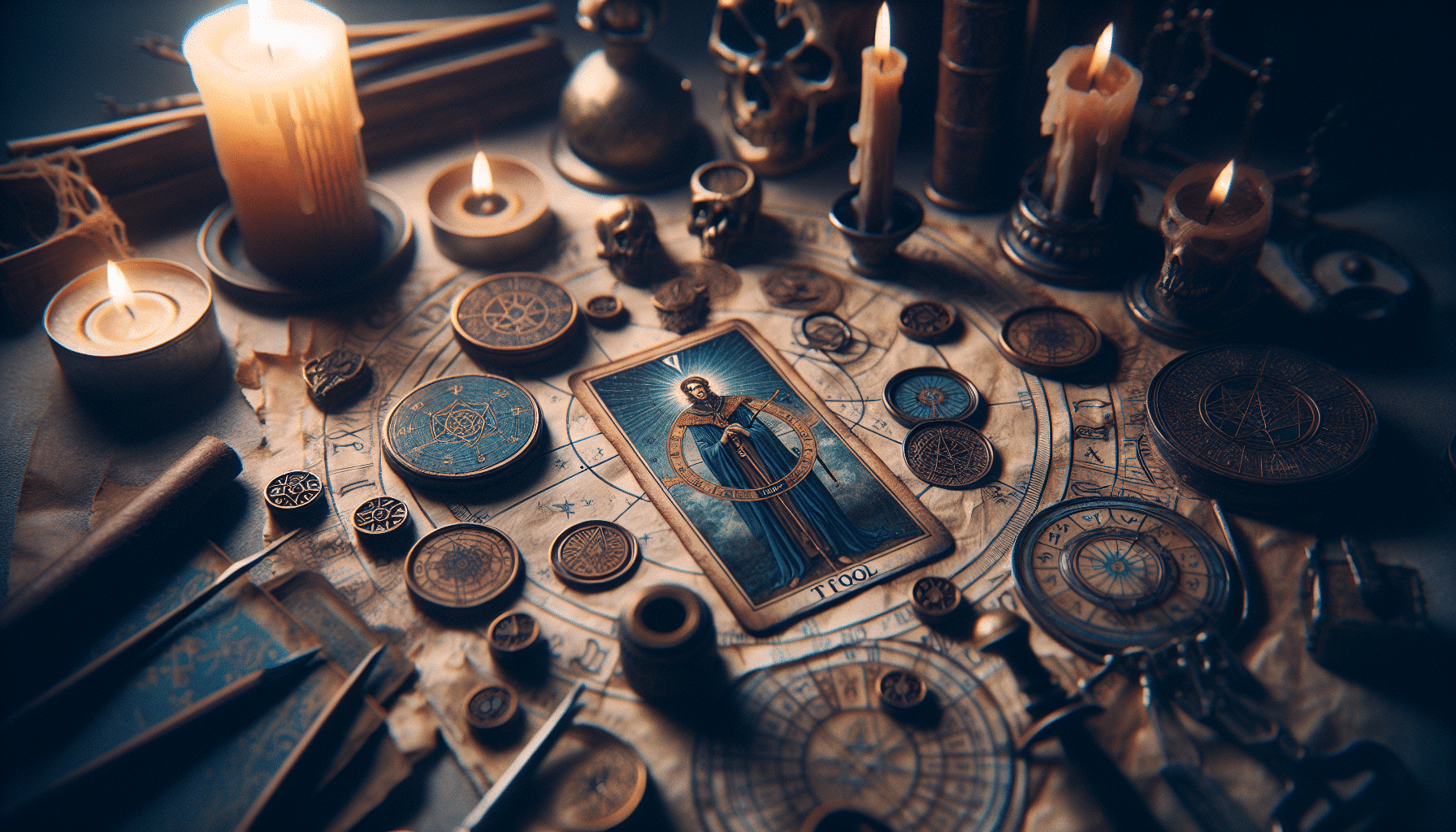
In exploring the mystical, you’ll find tarot cards have become a cornerstone within various occult traditions. These decks aren’t just tools for divination; they’re also rich in mystical archetypes and imbued with esoteric philosophies. As you delve deeper, you’ll see that each card serves as a mirror to the soul, reflecting a myriad of human experiences and spiritual lessons.
Occultists often use tarot to navigate the hidden aspects of the psyche, drawing upon the symbolism within the cards to unlock deeper insights. The imagery of the Major and Minor Arcana resonates with the teachings of Kabbalah, alchemy, and other mystical systems, creating a language that bridges the conscious and subconscious realms.
You’ll find that tarot’s influence extends beyond personal enlightenment. It has also played a significant role in the development of modern occult groups. Organizations like the Hermetic Order of the Golden Dawn have integrated tarot into their practices, using the cards for initiation ceremonies and as a means of exploring the spiritual path.
Through tarot, you’re not just predicting the future; you’re engaging with a tradition that weaves together ancient wisdom, psychological exploration, and spiritual growth, making it a vital element in the tapestry of occult history.
Popularization of Tarot Readings
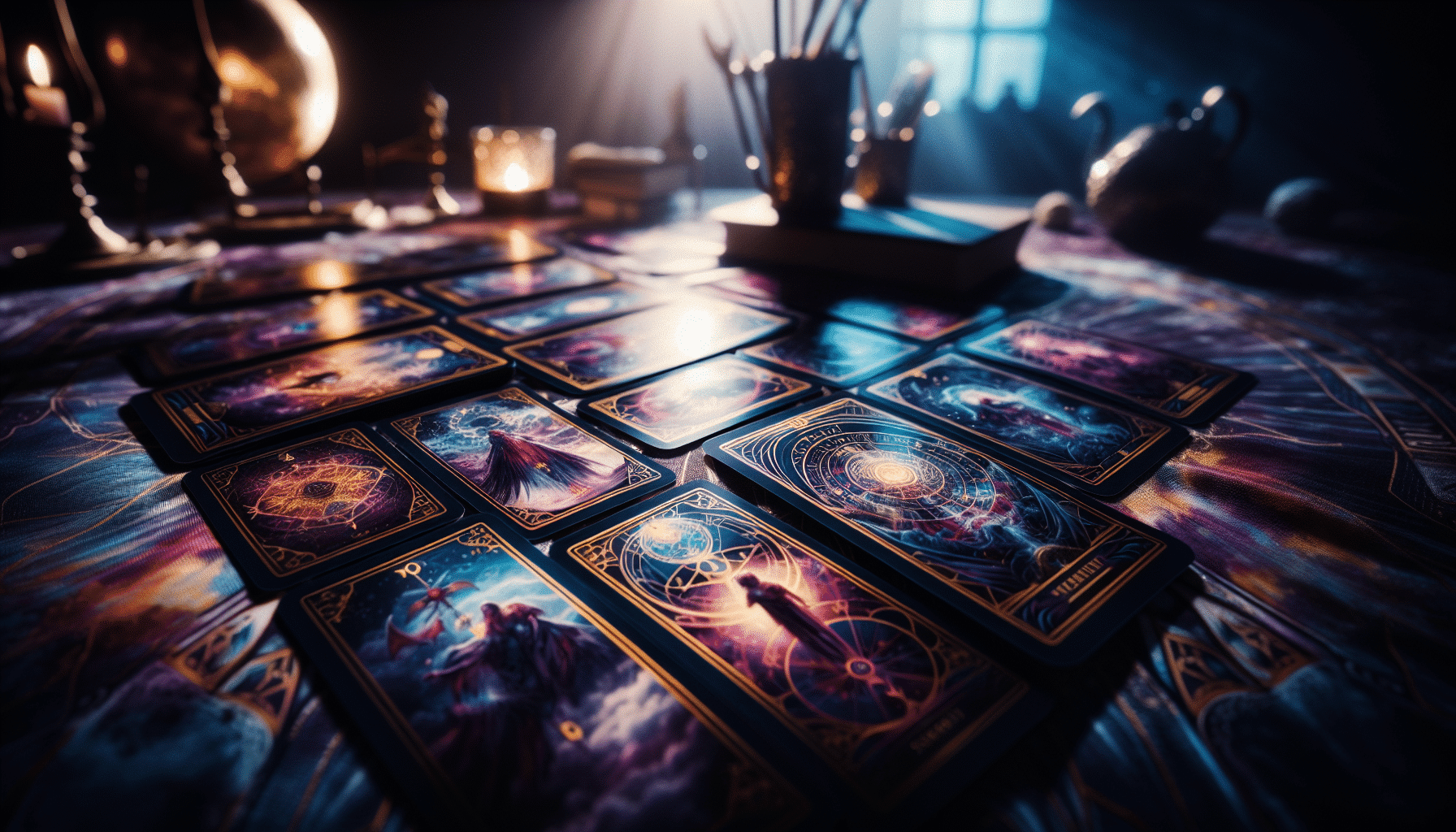
Having woven itself into the fabric of occult practices, tarot also gained mainstream popularity as a tool for fortune-telling, with its readings becoming accessible to you and people from all walks of life. The allure of tarot is undeniable, whether it’s the mystery behind the symbols or the promise of gaining insight into one’s life.
Here’s how tarot readings became so popular:
-
Widespread Availability: Tarot decks are easily obtainable in bookstores, metaphysical shops, and online. You can start card collecting or delve into readings without much hassle.
-
Cultural Integration: Movies, books, and art have incorporated tarot imagery, making it familiar to you even outside esoteric circles.
-
Psychic Entertainment: Tarot readings have become a form of psychic entertainment at parties and gatherings, providing fun conversation topics and intriguing insights.
-
Online Readings: The digital age has made tarot more accessible. You can receive readings via websites or apps, broadening the audience and convenience.
Tarot has transcended its mystical origins, becoming a cultural phenomenon that you can enjoy for personal exploration or as part of a broader interest in psychic entertainment. Whether you’re a seasoned reader or a curious newcomer, the world of tarot is open to you.
Tarot in Modern Culture
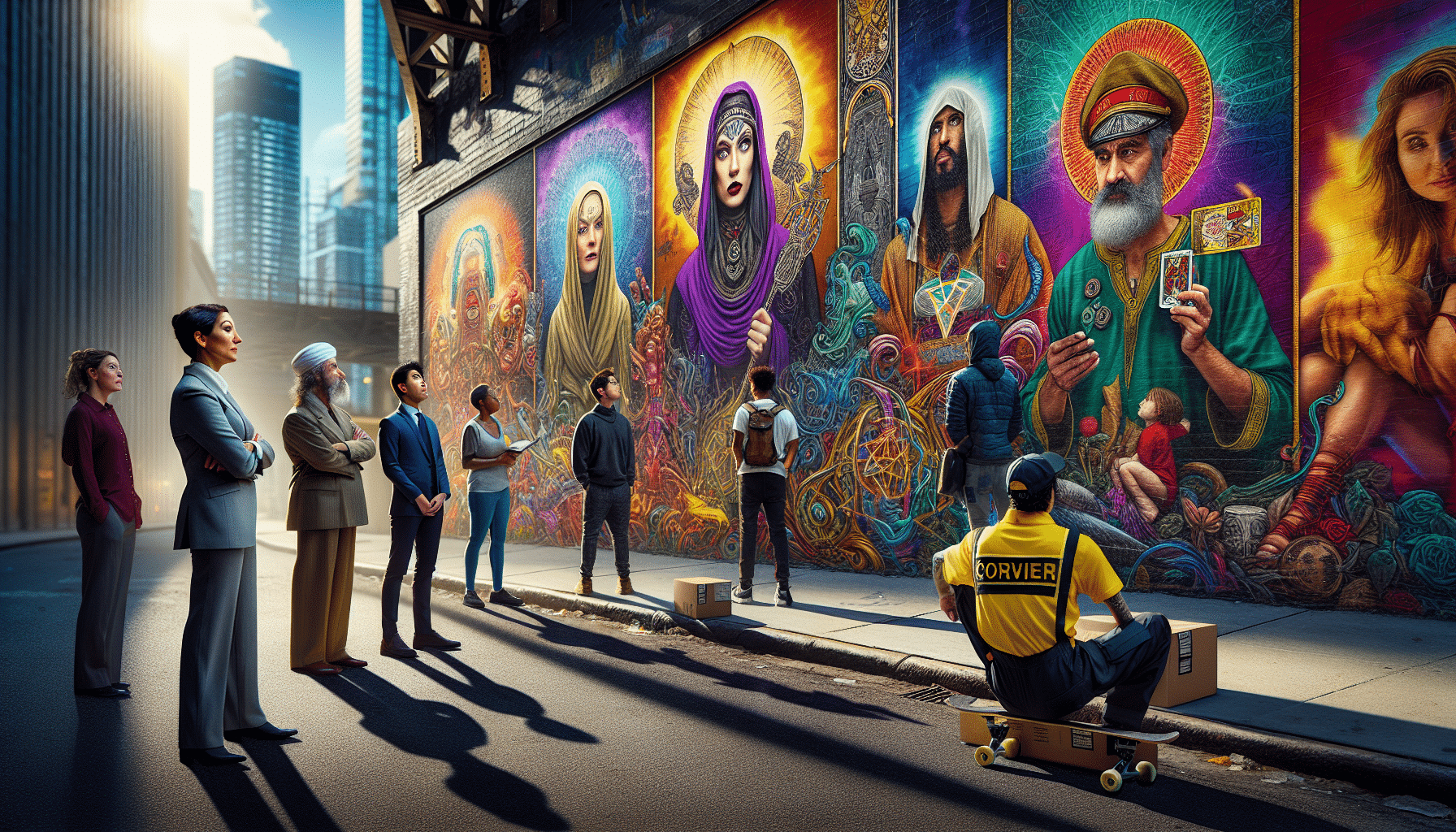
Over the years, you’ve witnessed tarot’s evolution from mystical tool to a staple in modern pop culture. It’s no longer confined to the secretive corners of occult practices; tarot has made its way into your everyday life. You’ll see its influence in art, music, fashion, and especially at psychic fairs, where the air buzzes with a blend of ancient mysticism and contemporary curiosity.
With digital apps now bringing tarot readings to your fingertips, it’s easier than ever to connect with this ancient practice. These apps range from free versions with basic explanations to more elaborate, paid ones offering a deeper dive into the world of tarot. You don’t have to be a seasoned reader or even a believer; tarot’s rich symbolism and reflective nature make it a compelling tool for personal insight and entertainment.
Here’s a quick look at how tarot has integrated into modern culture:
| Medium | Example | Impact on Culture |
|---|---|---|
| Digital Platforms | Tarot Reading Apps | Accessibility and convenience |
| Entertainment | Films and TV Shows | Broader audience reach |
| Events | Psychic Fairs | Live interaction and experience |
| Art and Fashion | Tarot-Inspired Designs | Influence on aesthetics and trends |
Tarot’s presence in these areas shows just how deeply it’s woven into the fabric of your cultural experience.
Conclusion
You’ve journeyed through the mystical evolution of tarot, from medieval parlor games to a cornerstone of occult practices. The cards’ enigmatic symbols have whispered secrets for centuries, shaping the art of divination.
But could these arcane images hold more than mere fortune-telling power? Some theorize that tarot cards encode hidden wisdom, a theory that tantalizes seekers of truth.
As you shuffle the deck, ponder this: might the tarot’s true impact lie beyond the veil of known history?
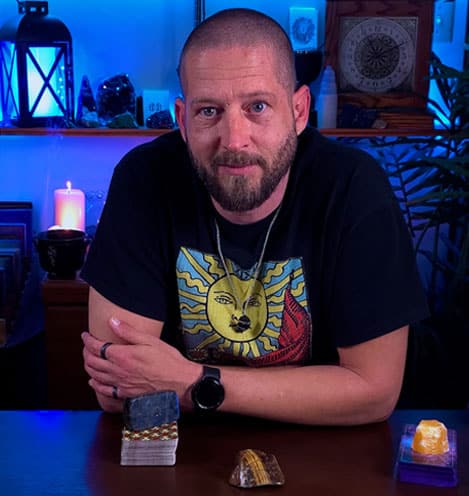
About The Author – Allen Hill
Allen Hill, the force behind Unknown Truth Tarot, has a YouTube following 6-times bigger than the population of his hometown, Miamisburg, Ohio. From his spiritually rich blog on Tarot and crystals to his role as CEO of The Unknown Truth Tarot Metaphysical Shop, Allen’s passion for the metaphysical shines through.
A master Tarot reader and “crystal junkie,” Allen is also a devoted dad to Dylan, 10, and Destiny, 24. When he’s not immersed in the world of Tarot and crystals, he enjoys poker and video gaming sessions, often humorously outplayed by Dylan.
Follow Allen on Twitter, Instagram, Facebook, TikTok, and subscribe to his Unknown Truth Tarot YouTube channel to join him on a journey of spiritual growth and self-discovery.

